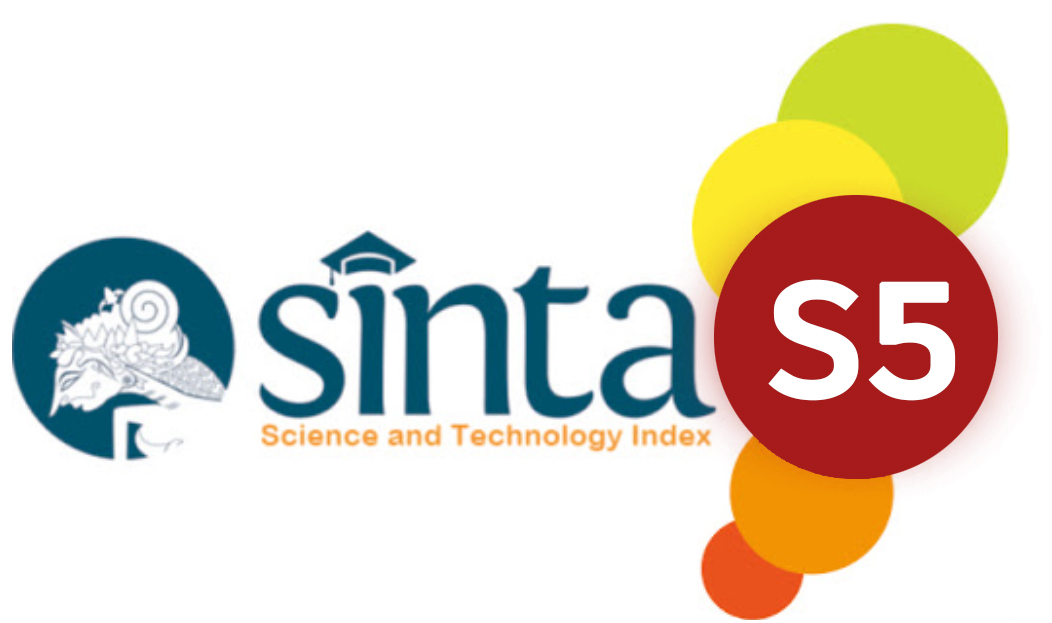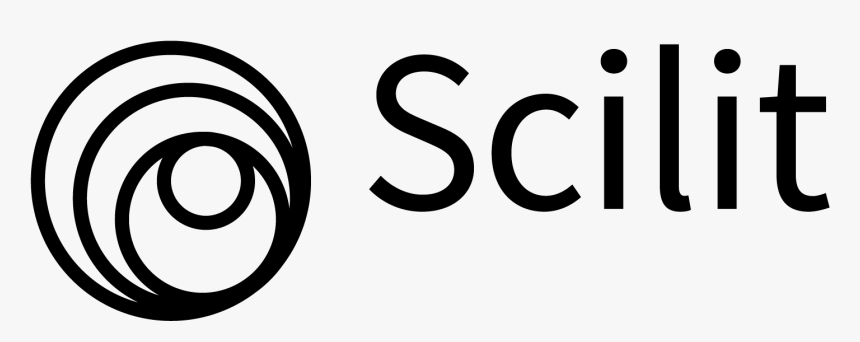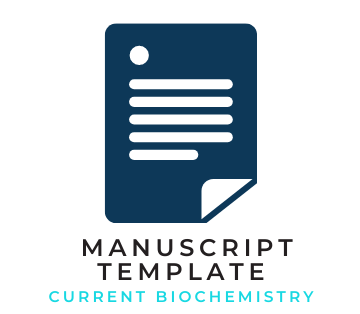Antimicrobial Activity of <i>Allium chinense</i> G. Don.
Abstract
This study aims to analyze antimicrobial activity of Allium chinense G. Don extract against Eschericia coli, Salmonella typhi, Staphylococcus aureus, Bacillus subtilis and Candida albicans, and to examine the active compounds. Allium chinense G. Don was extracted using maseration method and treated with ethanol 70% (v/v), ethanol 96% (v/v), ethyl acetate, n-hexane, and aquadest. Antimicrobial activity assay was conducted using agar difusion method and compounds analysis using Gas chromatography-massspectrometry (GC-MS). Antimicrobial activities assay showed that all extracts could inhibit microbial growth. Ethyl acetate extract has the highest antimicrobial activity against all the microbial test. Minimum inhibitory concentration (MIC) of ethyl acetate extract against C. albicans, B. subtilis, E. coli, S. aureus, S. typhi was 25, 100, 250, 250, 1000 mg ml-1 respectively. As many as 25 compounds were derived from GC-MS analysis and most of them were known as the antimicrobial compounds. This study revealed that Allium chinense G. Don contains biologically active compunds as antimicrobial agent particularly anti Candida.
References
Abubakar EM. 2009. Efficacy of crude extracts of garlic (Allium sativum Linn.) against nosocomial Escherichia coli, Staphylococcus aureus, Streptococcus pneumoniae and Pseudomonas aeruginosa. J. Med Plants Res. 3(4): 179-185.
Bibi F, Mohammadi F, Shah QA, Shah AH. 2013. Inhibitory activity of allyl alcohol derived from alliin in garlic against food borne pathogen Candida albicans. Can J App Sci. 1(3): 399-412.
Branen AL and Davidson PM. 2005. Antimicrobial in Food. 3rd ed. New York: CRC Press. p 2-9.
Chai WM, Liu X, Hu YH, Feng HL, Jia YL, Guo YJ, Zhou HT, Chen QX. 2013. Antityrosine and antimicrobial activities of furfuryl alcohol, furfural and furoic acid. International Journal of Biological Macromolecules. 57: 151155. DOI: 10.1016/j.ijbiomac.2013.02.019.
Focke M, Feld A, Lichtenthaler HK. 1990. Allicin, a naturally occurring antibiotic from garlic, specifically inhibits acetyl-CoA synthase. FEBSLett. 261: 106-108.
Hannan A, Humayun T, Hussain MB, Yasir M, Sikandar S. 2010. Invitro antibacterial activity of onion (Allium cepa) against clinical isolates of Vibrio cholera. J Ayub Med Coll Abottabad. 22(2): 160-163.
Harborne JB. 1996. Phytochemical Methods: A Guide to Modern Techniques of Plant Analysis. London: Chapman and Hall Inc.
Jaroni D. 2014. Salmonella typhi. Encyclopediaof Food Microbiology. 3: 349-352. DOI: 10.1016/B978-0-12-384730-0.00296-2.
Jiang Y, Wang NL, Yao XS, Kitanaka S. 1999. Steroidal saponin from the bulbs of Allium chinense. Studies in Plant Science. 6: 212-219. DOI: 10.1016_S0928-3420(99)80029-9.
Kanazawa A, Ikeda T, Endo T. 1995. A novel approach to made of action on cationic biocides: morfological effect on antibacterial activity. J. Appl Bacteriol. 78:55-60.
Kang SS, Lim DR, Kyung KH. 2010. 3-(allyltrisulfanyl)-2-amino-propanoicacidI, a novel nonvolatile water-soluble antimicrobial sulfur compound in heated garlic. J. Med Food. 13(5):1247-253. DOI: 10.1089/ jmf.2010.1059.
Kuroda M, Mimaki Y, Kameyama A, Sashida Y, Nikaido T. 1995. Steroidal saponin from Allium chinense and their inhibitory activities on cyclic AMP phosphodiesterase and Na+/K+ ATPase. J. Phytochemistry. 40(4): 10711076. DOI: 0031-9422(95)00423-8.
Kyung KH. 2012. Antimicrobial properties of allium species. Current Opinion in Biotechnology. 23:142-147. 10.1016/j.copbio.2011.08.004.
Lemar KM, Passa O, Aon MA, Cortassa S, Muller CT, Plummer S, O’Rourke B, Lloyd D. 2005. Allyl alcohol and garlic (Allium sativum) extract produce oxidative stress in Candida albicans. Microbiology. 151: 3257-3265. DOI: 10.1099/mic.0.28095-0.
Liu XC, Lu XN, Liu QZ, Liu ZL. 2014. Evaluation of insecticidal activity of the essential oil of Alliumchinense G. Don and its major constituents against Liposcelis bostrychophila Badonnel. JournalofAsia-PacificEntomology. 17: 853-856. DOI: 10.1016/ j.aspen.2014.08.007.
Naeini A, Naderi NJ, Shokri H. 2014. Analysis and in vitro anti-Candida antifungal activity of Cuminum cyminum and Salvadora persica herbs extracts againts pathogenic Candida strains. Journal of Medical Mycology. 24: 1318. DOI: 10.1016/j.mycmed.2013.09.006.
Naidu AS, Davidson PM. 2000. Phyto-phenols. In: Naidu AS. Natural food Antimicrobial System. New York: CRC Press.
Naufalin R, Jenie BSL, Kusnandar F, Sudarwamto M, Rukmini H. 2005. Aktivitas antibakteri ekstrak bunga kecombrang terhadap bakteri patogen dan perusak pangan. J. Teknol dan Industri Pangan. 16(2): 119-125.
Nchu F, Aderogba MA, Mdee LK, Eloff JN. 2010. Isolation of anti-Candida albicans compound from Markhamia obtusifolia (Baker) Sprague (Bignoniaceae). South African Journal of Botany. 76: 54-57. DOI: 10.1016/j.sajb.2009.07.003.
Rattanachaikunsopon P and Phumkhachorn P. 2008. Diallyl sulfide content and antimicrobial activity against food-borne pathogenic bacteria of chives (Allium schoenoprasum). J. Biosci. Biotechnol. Biochem. 72(11): 2987-2991.
Robinowitch HD and Currah L. 2002. Allium Crop Science: Recent Advances. New York: CABI Publishing.
Sutar RL, Mane SP, Ghosh JS. Antimicrobial activity of extract of dried kokum (Garcinia indica C). International Food Research Journal. 19(3): 1207-1210.
Saeidi S, Hassanpour K, Ghamgosha M, Heiat M, Taheri RA, Mirhosseini A, Farnoosh G. 2014. Antibacterial activity of ethyl acetate and aqueous extracts of Mentha longifolia L. And hydroalcoholic extract of Boiss. plants against important human pathogens. Asian Pac J. Trop Med. 7(10): 186-189. DOI: 10.1016/S1995-7645(14)60229-7.
Waag T, Gelhaus C, Rath J, Stich A, Leippe M, Schirmeister T. 2010. Allicin and derivates are cysteine protease inhibitors with antiparasitic activity. Bioorg Med Chem Lett. 20:5541-5543.
Weber ND, Andersen DO, North JA, Murry BK, Lawson LD, Hughes BG. 1992. In vitro virucidal effects of Allium sativum (garlic) extract and compounds. J. Planta Med. 58:417423.
Yasni S. 2013. Teknologi Pengolahan dan Pemanfaatan Produk Ekstraktif Rempah. Bogor: IPB Press.
Zanatta N, Alves SH, Coelho HS, Borchhardt DM, Machado P, Flores KM, Da Silva FM, Spader TB, Santurio JM, Bonacorso HG, Martins MAP. 2007. Synthesis, antimicrobial activity, and QSAR studies of furan-3-carboxamides. J. Bioorganic & Medical Chemistry. 15(5): 1947-1958. DOI: 10.1016/j.bmc.2007.01.003.













